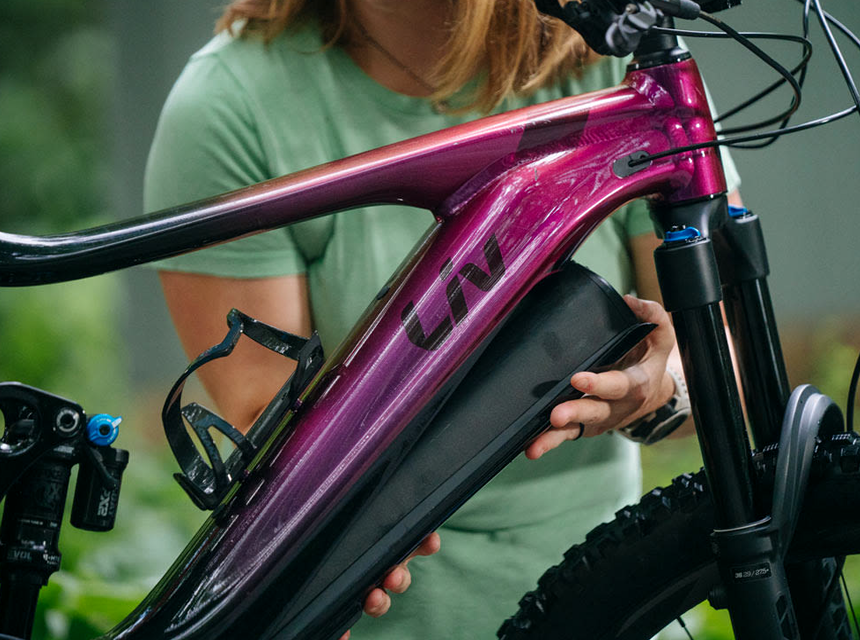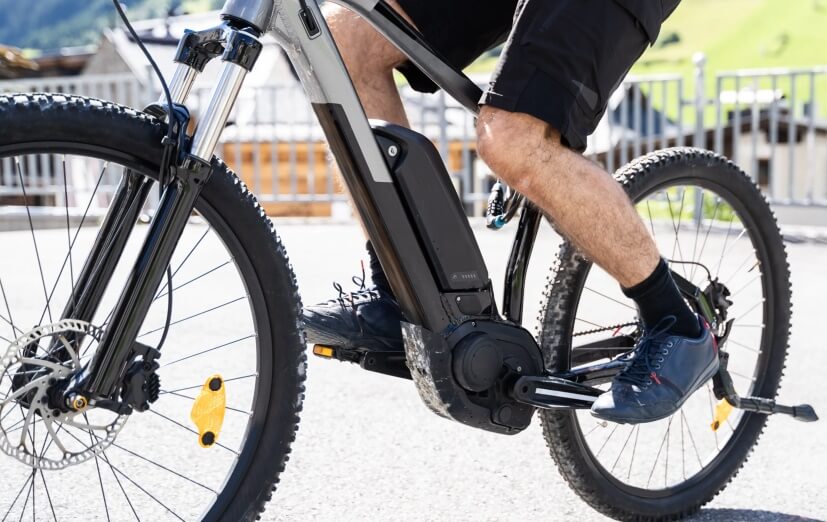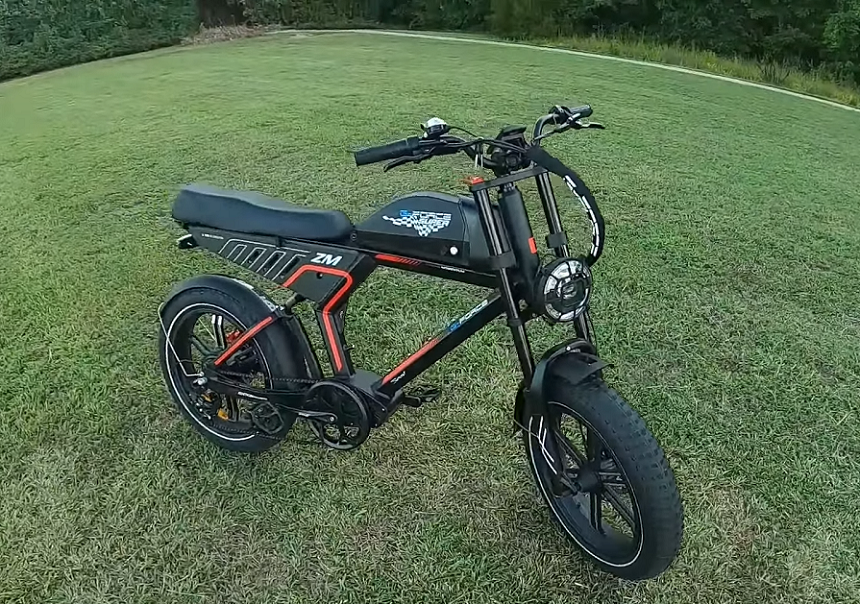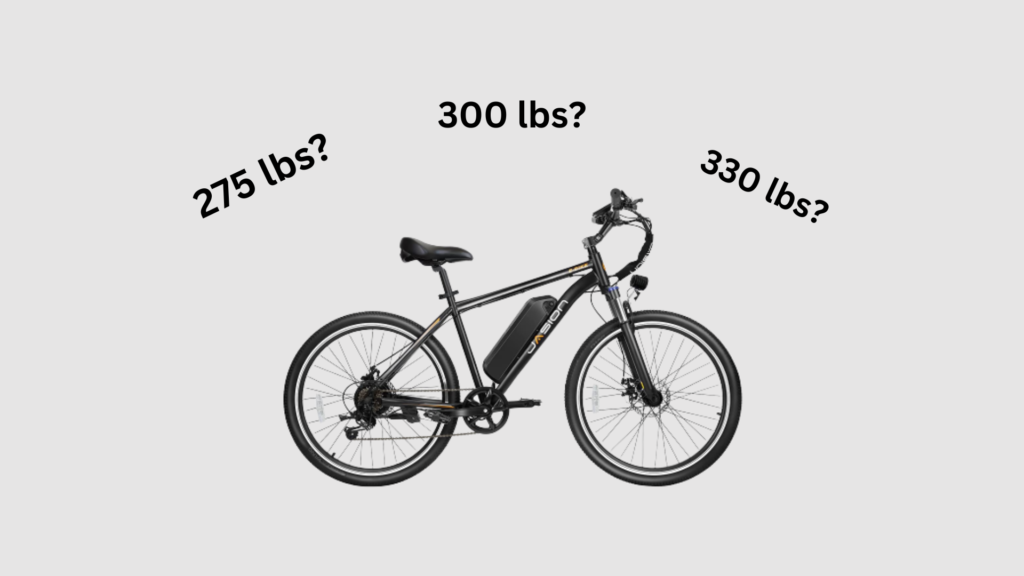- Trails
-
Bikes
-
Gear
-
Tips & Tricks
-
About us


It’s natural to wonder if an electric bike charges while pedaling because this is a feature that many people want. Some manufacturers promote this recharging, and this is a great incentive if your hard work pedaling can be converted into power. But, this feature is known in the industry as regenerative braking, and the number of e-bikes that have this ability is pretty limited. If an electric bike charges while pedaling, it tends to restore around 10% of the battery, and this only occurs during braking. The recharging process engages when the rider brakes lightly as they approach stop lights or slow their speed as they travel downhill. In this article, we will explore this topic in more detail to help you make an informed purchasing decision.
So, will an electric bike charge while pedaling? This is an inaccurate question to ask, it’s not the pedaling that recharges the e-bike, it’s the regenerative braking system. But how does this system work and are there any major disadvantages to consider?
When a rider operates a traditional braking system, they will apply the brakes, and friction is created on the wheel to slow and ultimately stop the bike. The action between the surface of the tire and the road surface creates friction, generating kinetic energy. On a traditional bike this kinetic energy is wasted, and it’s released into the surrounding air as heat.
The best electric bikes under 2000 dollars and the best class 1 e-bikes have the regenerative braking feature. This is a similar albeit scaled down version of the system that is used on larger electric vehicles. When the e-bike brakes, a certain portion of that kinetic energy is captured and directed to the onboard battery. The only e-bikes that have this feature are driven by hub motors and around 5-10% of the generated energy is captured and stored. The percentage rises slightly, if the rider is traveling through hilly areas where more regenerative braking would take place.
Some rechargeable e-bikes that state that they use pedaling to recharge is using incorrect terms. You may hear the phrase “regenerative pedaling”, but this is not correct, and regenerative braking is what is actually taking place during the ride. Regenerative braking has been in use for two decades on a wide variety of electric vehicles, including cars, vans, bikes, and even skateboards.
So, an electric bike that charges as you pedal is not an option, and the next logical question would be, is regenerative braking effective? A true understanding of the regenerative braking process would become extremely complex. But, to put this into simple terms that anyone can understand is much easier.
When regenerative braking occurs, the electric motor is placed in reverse mode temporarily. For a short time, the electric motor runs backward, and this causes the bike to slow down. But, as the motor runs in reverse, it acts as a generator, and the collected energy is sent to the onboard battery for storage. Then at any time, that collected power can be used to run the e-bike, and the process continues.
The main drawback with e-bike regenerative braking is that these bikes have a lower mass than other electric vehicles. This means that the full potential effectiveness of this system would require braking and stopping at high speeds. The next problem is that the motor must be engaged at all times, or the regenerative braking will not engage. On e-bikes that don’t have this feature, it is possible to coast, and this can reduce the range.
Electric bike manufacturers claim that regenerative braking could add 10-20% to the range of an e-bike. But, in reality, this is pretty hard to achieve, and any energy collected should be considered to be a bonus. The regenerative braking feature can add a lot to the cost of the best class 3 electric bikes, and this may be money misspent. After all, you could purchase a second battery and carry it with you to extend the operational range. In real terms, the added weight of a regenerative braking system would not double the range of your chosen e-bike.
The term “regenerative braking” presents some marketing problems because it’s hard to understand without a specific engineering background fully. Many people wonder if pedaling plays any part in energy generation or is entirely driven by braking. But, to come back to the point we made earlier, the best way to think of regenerative braking is that it helps you to recover lost energy from braking. To drive the e-bike forward, some pedaling may have occurred, and braking from that built-up speed is how regenerative braking works. So, indirectly, pedaling could be considered to be part of the process, but that may be a reach. The kinetic energy collected during braking would be lost to both wind resistance and heat dissipation as the e-bike slows and/or stops. Directing that energy back to the battery is an attractive feature, but it may lack sufficient efficiency for riders that want to extend the range of their electric bikes.
This is a tough question to answer, regenerative braking is a real tool that does work, and you can regain some energy that would be wasted during braking. But, it is true that marketers do spend too much time promoting this feature because it’s less effective than most people might imagine. Regenerative braking is only possible on larger e-bikes that have no gears, and manufacturers of alternative e-bikes do try to debunk the benefits of this system. As you might imagine, the truth of the matter lies somewhere in the middle of these polar opposite opinions. Although regenerative braking will help the rider preserve energy, it’s limited in nature, and it will not double the range. Due to the differences in mass and other factors, an electric bike will never have a regenerative braking system as good as those found on an electric car.
This is another area where some outlandish claims are made that could only be supported in strict testing when the conditions may be absolutely ideal. Most manufacturers of e-bikes with regenerative braking systems will claim that up to 10% of the energy can be recovered for later use. In reality, it’s more likely to be in the 6-10% range and probably at the lower end of that range. Even under optimal conditions, you would only get an extra mile if you pedaled ten miles and braked frequently. This is easy to extrapolate to get a benchmark figure, such as: 5% will get you an extra half mile of range and so on.
No, regenerative braking causes no damage to e-bike brakes, they don’t wear out more quickly, and they may even reduce stress and extend their lifespan. Why? When the regenerative braking system is engaged, the motor itself provides some of the braking force as it runs in reverse. Some of the kinetic force is converted into energy for the battery, and this reduces the wear on the brakes. In comparison, e-bikes that have traditional braking systems will have brakes that wear faster than normal bikes. The heavier weights and higher speeds of e-bikes will increase the wear and tear on the brakes significantly.
It stands to reason that regenerative braking will extend a single battery charge on the go. There is no requirement to charge the battery fully, the extra energy is stored immediately, and you can use it to extend the range. Changing your route to one that requires more braking may seem counterproductive. This could be a route with more ascents and declines, or you could opt for a flatter ride with more traffic lights. Braking more creates extra kinetic energy that you can store for later use.
Now that you have a better answer to the question, do electric bikes charge when you pedal? You may be surprised to learn that only a small number of premium-grade e-bikes that are expensive to buy have regenerative braking systems. The vast majority of electric bikes don’t use this technology because it relies on a very specific direct drive motor. This is not the same motor that you will find on more affordable e-bikes.
A direct drive motor has regenerative braking capability, but there is a disadvantage if you choose this type of motor to power your e-bike. When the battery is fully discharged, the rider must pedal the bike, and this is much harder because the resistance from these motors is formidable. A regular geared motor on a standard electric bike doesn’t behave in this manner, and they are much easier to pedal.
Another major disadvantage is that regenerative braking does generate significant heat. This heat doesn’t dissipate easily like it would in a standard e-bike. The extra heat can shorten the lifespan of the battery, and it can even cause a battery failure. E-bike batteries are designed to operate in specific temperature ranges for riding and charging. If those temperatures are exceeded, e-bike owners may experience battery-related problems.
E-bikes that use regenerative braking are more expensive, and this is exacerbated by the fact they don’t offer a great return on investment (ROI). Why? Well, as we mentioned earlier, you would be lucky to get the 10% upper estimate of energy returned. In the 5-10% estimated range, it’s far more likely that you would regain energy at the lower end. This is not a great draw for manufacturers either, it’s a hard sell, and although the system works, it’s not a great fit for e-bikes. Most buyers are not motivated to spend a lot of money to gain such a small amount of energy back when they could simply carry a spare battery. So, the low demand for these e-bikes restricts their production and the uptake among potential customers. That being said, there are people that want to preserve their brakes and gain extra range, and for those, the extra price may be worth it.
Yes, you would need a pretty large solar panel, and the e-bike would not be available every day if solar was the only power source. To supplement the power, the use of portable battery packs may help. These can be recharged with a solar power system and carried as needed. But, for camping or extended trips, this is not a viable option because the solar panels are bulky and heavier than one or two backup batteries.
Many large battery manufacturers have joined the e-bike market over the last decade. Competition is fierce, and this has driven technological advances to extend the range of e-bike batteries. At the moment, you can get 20-50 miles of range on a single electric bike battery charge. The reason for such a huge range disparity is that there is a huge range of e-bikes and batteries on the market, and they vary a great deal in quality. But, if you want to invest in a premium-grade e-bike, the manufacturers claim ranges of 100 miles or more! The exact range can vary depending on the terrain features, the hills, wind conditions, motor power, the battery, and more.
There are four ways to maximize your e-bike range:
If you select a lower power assistance setting, you will need to work harder to move the e-bike. But, the amount of power that you’re using from the battery is reduced, and this will increase the overall range. If you use an e-bike with a throttle assist, it’s a good idea to limit the use of an extended range is your priority.
If you choose to cycle at lower speeds, you will consume less energy overall. At increased speeds, the amount of power required increases quickly, and this drains the battery faster.
Making a switch to thin tires, with smoother surfaces and higher tire pressure, will reduce the amount of drag. Improved drag efficiency will reduce the workload of the motor, and this will reduce the power drain on the battery.
Keeping the battery cool will improve the efficiency and the potential lifespan. Make sure that the brakes are not rubbing and causing friction on the wheels. Reducing weight on the e-bike will also help remove anything you don’t need and clean the bike to get rid of any dirt and mud.
Most e-bikes use lithium batteries, and their respective ranges will vary depending on the battery size. But, it is possible to install more powerful batteries into your electric bike to extend the range. Another option is to carry a second battery for longer rides to double the effective range. This makes the question, will an electric bike charge while pedaling? Largely irrelevant. It’s probably a better idea to focus on the other features you need, and if the e-bike that you like has regenerative braking, it can be considered a bonus feature.





